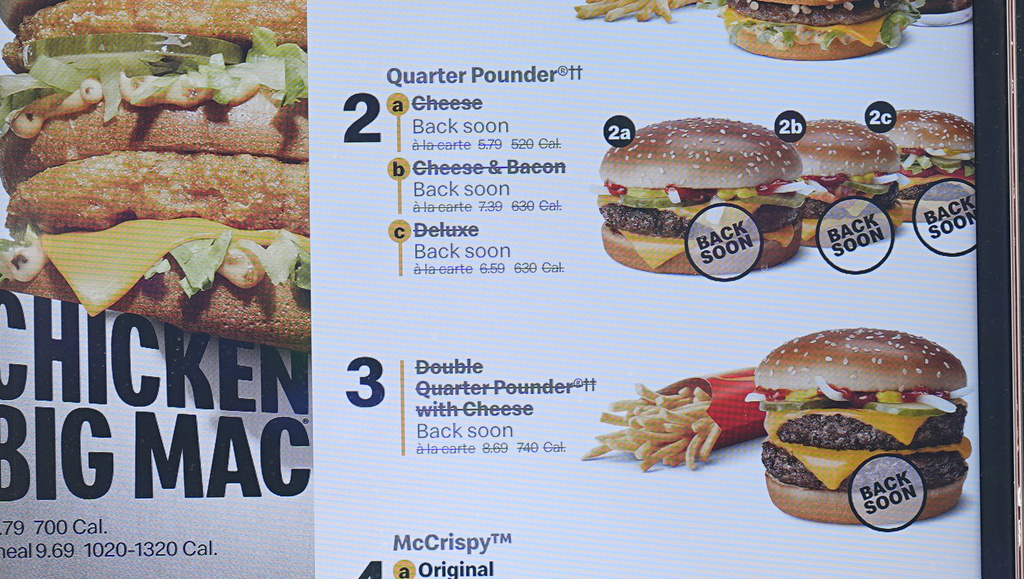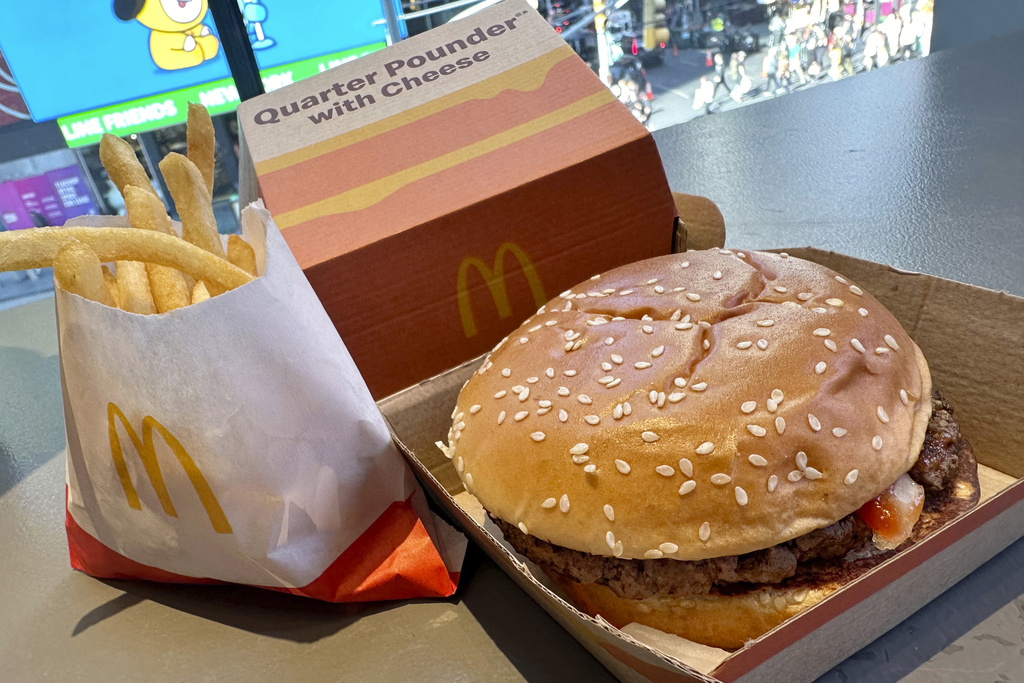E. Coli Outbreak at McDonald’s Sickens 50, Caused by Onions \ Newslooks \ Washington DC \ Mary Sidiqi \ Evening Edition \ An E. coli outbreak linked to McDonald’s Quarter Pounder burgers has sickened 50 people, resulting in one death. The outbreak, caused by the dangerous E. coli O157strain, is thought to have originated from raw slivered onions served on the burgers. The bacteria can cause severe illness, especially in young children, the elderly, and those with weakened immune systems. The CDC is investigating, and McDonald’s has halted the use of the onions as a precaution.

McDonald’s E. Coli Outbreak: What to Know About the Bacteria and Food Poisoning Risks
- Outbreak cause: E. coli O157linked to raw slivered onions on McDonald’s Quarter Pounders.
- Affected people: 50 people have fallen ill, ages 13 to 88, with one confirmed death.
- Symptoms: E. coli can cause vomiting, bloody diarrhea, and kidney failure, particularly in young children.
- Spread: E. coli is spread through contaminated food, the environment, or contact with infected people or animals.
- Food poisoning: E. coli is one of many germs that cause food poisoning, alongside norovirus, Salmonella, and Listeria.
Deep Look
The CDC’s preliminary investigation points to raw slivered onions served on the Quarter Pounders as the likely source of contamination. While health officials initially focused on both the onions and beef patties, the onions are more suspect, as McDonald’s meat protocols and federal testing requirements for beef make it less likely that the hamburger patties were the source. The beef is cooked to a temperature that should kill harmful bacteria, while the onions are served raw, making them a more likely vector for the bacteria.
What is E. coli?
E. coli, or Escherichia coli, is a bacteria commonly found in the intestines of people and animals, as well as in water and food. While most types of E. coli are harmless, some strains can cause serious illness. The E. coli O157strain, which is responsible for the McDonald’s outbreak, is particularly dangerous. It produces a toxin called Shiga toxin, which leads to severe gastrointestinal symptoms like vomiting, stomach cramps, and bloody diarrhea. In more severe cases, especially in children under 5, E. coli infections can cause hemolytic uremic syndrome (HUS), a condition that leads to kidney failure.
How is E. coli Spread?
E. coli is typically spread through the consumption of contaminated food or water. In the case of the McDonald’s outbreak, investigators are focusing on the raw slivered onions served on the Quarter Pounders as the likely source of the bacteria. Contamination can occur at any point in the food production process, from growing and harvesting to handling and serving. Beef patties were initially considered a possible source, but they are an unlikely culprit due to McDonald’s strict cooking protocols and federal meat testing requirements. The raw onions, however, may have been contaminated either during harvest, handling, or transportation.
Symptoms of E. coli Poisoning
Symptoms of E. coli poisoning usually appear within 1 to 4 days of exposure and can range from mild to severe. The most common symptoms include:
- Fever
- Vomiting
- Diarrhea, which may be bloody
- Dehydration, leading to increased thirst and reduced urination
Severe cases, particularly in young children, can lead to hemolytic uremic syndrome (HUS), a type of kidney injury that requires immediate medical attention. If untreated, HUS can cause kidney failure and, in some cases, death. Those who experience severe symptoms, such as bloody diarrhea or signs of dehydration, should seek medical help immediately.
How Common is E. coli Poisoning?
E. coli O157is responsible for approximately 74,000 infections in the U.S. each year, resulting in more than 2,000 hospitalizations and 61 deaths, according to the CDC. The current McDonald’s outbreak is one of the larger E. coli outbreaks seen in recent years. While overall cases of E. coli infections were lower in 2023 than in previous years, the severity of infections, including cases of HUS, remained stable.
What Other Germs Cause Food Poisoning?
E. coli is just one of several harmful pathogens that can contaminate food. Other common germs responsible for food poisoning include:
- Norovirus: This is the leading cause of foodborne illness in the U.S., responsible for 19 to 21 million cases annually. Norovirus can spread rapidly, especially in crowded environments like restaurants, schools, and cruise ships.
- Salmonella: Another common bacteria, Salmonella, causes about 1.3 million infections in the U.S. each year. It is often linked to undercooked poultry, eggs, and produce.
- Listeria: Though less common, Listeria bacteria are especially dangerous for pregnant women, newborns, and older adults. Listeria causes about 1,600 illnesses each year, but is responsible for around 260 deaths. It is often found in contaminated dairy products, deli meats, and certain vegetables.
These bacteria, along with E. coli, highlight the importance of proper food handling, cooking, and storage practices to reduce the risk of foodborne illnesses.
Conclusion
The McDonald’s E. coli outbreak underscores the dangers of foodborne bacteria, especially for vulnerable populations. As the CDC investigates further, McDonald’s has temporarily halted the use of slivered onions on its Quarter Pounders, and officials are working to prevent the outbreak from spreading further. E. coli outbreaks, while relatively rare compared to other foodborne illnesses, can be life-threatening. Consumers are urged to remain vigilant and seek medical attention if they experience symptoms of food poisoning, especially those in higher-risk groups like young children, the elderly, and those with weakened immune systems.







